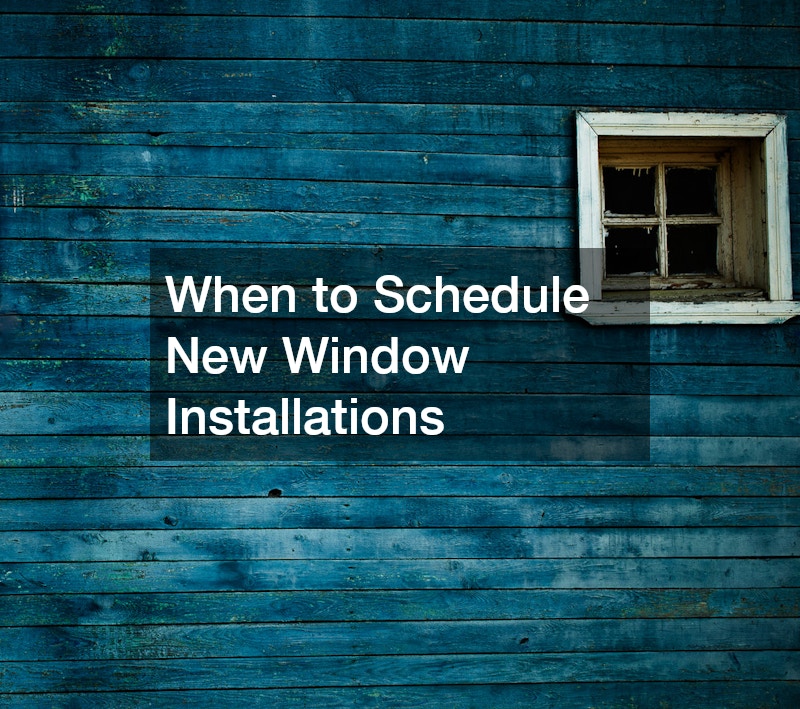In this article, we will discuss the best times and considerations for scheduling new window installations, helping you make informed decisions about your home improvement projects.
What is the Best Time of Year for Window Installations?
Understanding seasonal factors can help you choose the right time for window installations, optimizing energy efficiency and home comfort.
Generally, the best time of year for new window installations is during the spring and fall. These seasons typically feature milder temperatures, which allow for effective sealing and insulation during the installation process.
This not only helps in achieving better energy efficiency but also minimizes disruption to your daily activities.
In some regions, homeowners may also consider early summer as a viable time, provided that the temperatures are manageable. Summer can allow for quicker installation times, as contractors often have more availability. However, it’s essential to avoid the peak heat days, as extreme temperatures can hinder quality work and lead to potential delays.
Scheduling installations during cooler months means you can take advantage of deals that contractors might offer during their slower periods. This can lead to significant savings, making it easier for homeowners to invest in quality window replacements while ensuring excellent energy performance for the upcoming winter or summer seasons.
How Do Weather Conditions Affect Window Installation?
Weather plays a critical role in the installation process. Learn how different weather conditions can impact the timeline and quality of your installation.
Rain and snow can pose significant challenges during window installation. Wet conditions can delay the process and lead to complications such as water damage, which could undermine the integrity of the new windows. Therefore, it is essential to check long-term weather forecasts before scheduling your installation to ensure conditions are favorable.
Windy days can also create issues during installation. High winds can pose safety risks for installers and may require additional precautions to keep both workers and materials secure. Moreover, unpredictable gusts can affect the precision of the installation, possibly compromising the tight seals needed for optimal energy efficiency.
On the flip side, clear and calm days provide the best conditions for window installation, allowing contractors to work efficiently and effectively. Ensuring that weather conditions are checked ahead of time can contribute to a smoother installation experience, ensuring that your new windows perform at their best right from the start.
What Signs Indicate It’s Time to Replace Your Windows?
Identify key indicators that suggest it’s time to schedule new window installations, ensuring your home remains energy-efficient and secure.
One of the most noticeable signs that indicate it’s time for a window replacement is increased drafts in your home. When windows become less effective at sealing out the elements, you may start to feel the effects of outside air entering your living space. This not only causes discomfort but can also lead to increased energy bills as your heating and cooling systems work harder to maintain the desired temperature.
Another indicator is condensation buildup between window panes. This often implies that the seal on double or triple-pane windows has failed, compromising their thermal efficiency. If you notice moisture trapped between the glass layers, it’s usually a signal that it’s time for replacements, as these windows can no longer perform as designed.
Lastly, if your windows are difficult to open, close, or lock properly, it’s a sign of structural issues. Functional windows are essential for both safety and security, and constantly battling with them can be frustrating. Investing in new, operational windows can increase both the safety and overall comfort of your home.
How Long Does the Installation Process Take?
Understanding the timeline for window installation can help you prepare your home and plan around any potential disruptions.
The installation of new windows typically takes between one to two days, depending on various factors. The size and number of windows being installed, the type of installation method chosen, and the specific conditions of the home all play significant roles in determining how long the process will take. For larger homes, or those with many windows, installation may extend beyond two days.
Preparation is also a key factor in how quickly the installation can be completed. Removing old windows, preparing the opening for new installations, and ensuring a clean workspace can all facilitate a smoother process. Efficient contractors will communicate what you can do in advance to minimize your downtime during the installation process.
Lastly, the time of year can dictate installation speed. As mentioned, seasonally high-demand periods may see longer wait times due to contractor availability. Conversely, scheduling an installation during off-peak months could lead to quicker installation timelines, so proactive planning can ensure your project is completed efficiently.
Proper planning and timing are essential to ensure a successful window installation. By considering the factors discussed, you can make informed decisions that enhance your home’s value and comfort.



